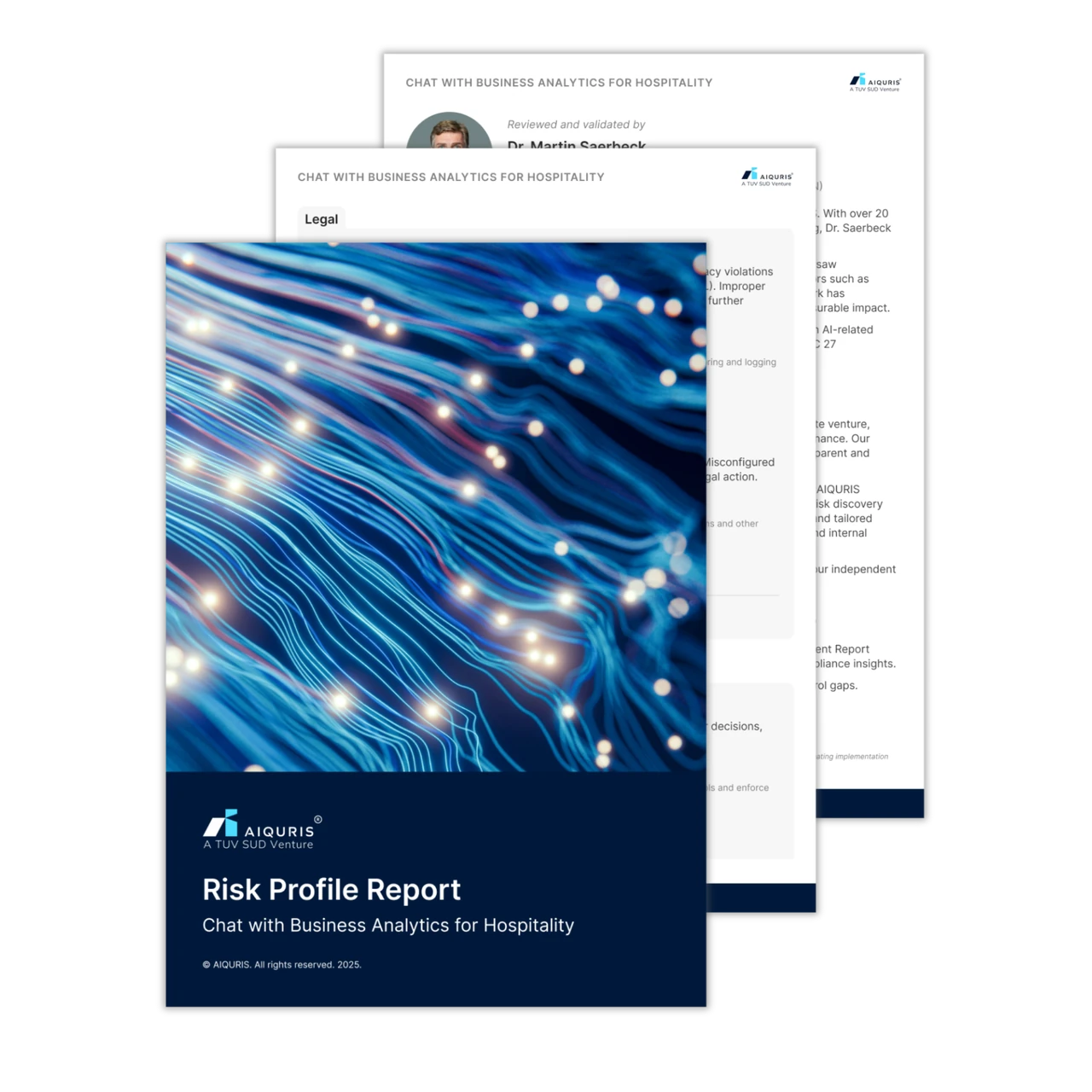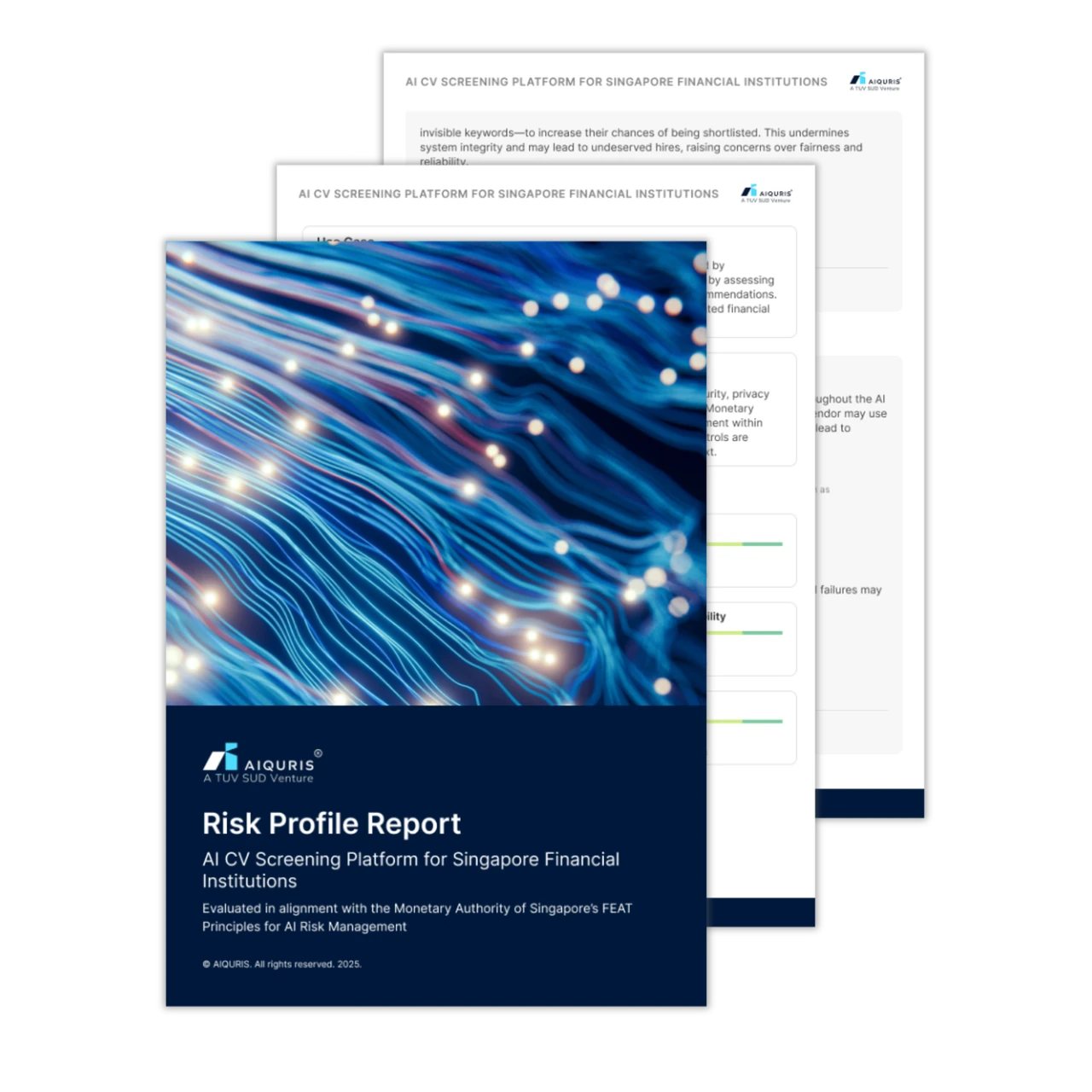Over 60% of manufacturing companies in Europe have implemented or are piloting AI use cases in their operations, a signal of the sector’s rapid digital evolution1. AI in industrial environments is powerful, but in high-risk settings, it must also be safe, transparent, and compliant. After the EU AI Act came into force in 2024, the need to balance innovation with regulation has become more urgent. To succeed, manufacturers require a governance framework that supports scale without stalling progress.
The Five Key Risk Domains for AI in Manufacturing
- Physical Safety: When AI controls robotics or machinery, malfunctions aren’t just inconvenient, they’re dangerous. BMW's Regensburg factory in Germany utilises AI-powered simulations to optimise assembly line processes, ensuring that robotic movements are safe and efficient before implementation2. Systems must meet stringent safety standards such as IEC 61508 and EN ISO 12100 to protect workers and prevent shutdowns.
- Operational Integrity: AI models underpinning quality inspection or production flow must be accurate and bias-free. Poor model performance can lead to defects, production waste, or loss of uptime.3
- High-Risk Classification (EU AI Act): Applications like predictive maintenance on critical machinery, AI-based safety components, or AI-assisted worker supervision are likely to be classified as “high-risk” under Articles 6 and 9–15 of the EU AI Act4.
- Data Governance in OT Environments: AI in manufacturing depends on operational technology (OT) data like sensor logs, machine telemetry, calibration metrics. These pipelines must be secured, validated, and traceable5.
- Supply Chain Risk: When AI is embedded in procurement platforms or logistics tools, third-party algorithms introduce new risk. Oversight must extend across vendors and partners6.
AIQURIS enables manufacturers to address these risk domains holistically through structured, automated risk profiling, real-time governance tracking, and regulatory-aligned controls that ensure safety, compliance, and operational trust from day one.
Regulations Shaping AI in European Manufacturing
Several overlapping regulatory regimes now define the rules for industrial AI:
- EU AI Act (2024): Establishes a risk-based framework. High-risk systems must meet obligations for transparency, oversight, and data governance4.
- ISO/IEC 42001: The first global AI management system standard, a governance foundation akin to ISO 9001.
- ISO/IEC 23894: Outlines risk management strategies for AI systems across the lifecycle.
- IEC 61508 / EN ISO 12100: Cover functional safety and safe machine design, critical where AI interfaces with physical processes.
- GDPR & NIS2: Impose rules around data processing, cyber resilience, and incident reporting.
Managing this matrix of requirements requires structured tools and expert insight.
The Practical AI Governance Framework: Powered by AIQURIS
AIQURIS helps European manufacturers implement governance frameworks that ensure AI innovation and compliance go hand in hand. Here are three key features:
Automated Risk Assessments
- What it does: Conducts structured risk profiling across six pillars (Safety, Security, Legal, Ethics, Performance, and Sustainability) while supporting vendor-specific risk analysis, including explainability and bias detection.
- Why it matters: Replaces manual guesswork with layered risk analysis benchmarked against ISO, IEC, and NIST standards, ensuring thorough, scalable, and defensible AI adoption.
- Aligned with: EU AI Act classification and ISO/IEC 23894 lifecycle risk principles.
Policy Adherence & Article-Level Reporting
- What it does: Maps AI systems to Articles 9–15 of the EU AI Act, generating real-time compliance requirements and governance checkpoints. Maturity tracking tools align deployments with ISO/IEC 42001 and national Industry 4.0 strategies.
- Why it matters: Enables audit-ready documentation and ongoing regulatory alignment across all AI deployments.
- Aligned with: ISO/IEC 42001 for system-level oversight and supplier assurance.
Immutable Audit Trails
- What it does: Captures tamper-proof audit trails with real-time monitoring and alerts for AI drift, compliance failures, or system vulnerabilities, ensuring constant audit-readiness.
- Why it matters: Supports defensible compliance and cross-functional transparency during internal reviews and regulator inspections.
- Aligned with: ISO 27001, NIS2, and ISO/IEC 42001.
With AIQURIS, manufacturers don’t just deploy AI, they deploy it responsibly.
A Scalable Path Forward for Industry 4.0
AI can transform European manufacturing but only if governance is built into the core. AIQURIS supports scalable AI adoption by aligning governance across technical teams, business functions, and regulatory requirements. With tools for real-time risk monitoring, automated requirement generation, and structured pre-deployment agreements, AIQURIS helps European manufacturers accelerate innovation, without sacrificing compliance or trust.
Conclusion
Governance isn’t a blocker to innovation, it’s the infrastructure that supports it. For manufacturers across Europe navigating complex AI regulations, building trust, safety, and compliance into the core of every deployment is no longer optional, it’s a strategic imperative. Those who embed governance into their AI lifecycle will lead the next phase of Industry 4.0 with confidence and credibility.
Explore how AIQURIS can help your team build audit-ready, risk-informed AI systems. Contact us to learn more.






